Ostim Eco-Park competition entry by ONZ Architects
By Bustler Editors|
Monday, Dec 30, 2013

Related
Young multidisciplinary Turkish firm ONZ Architects participated in a restricted competition - among eight other teams - to design the Ostim Eco-Park, a green technological and research hub for the industrial region of Ostim in Ankara, Turkey.
The Ostim Eco-Park will serve as a collaborative space for environmental technology stakeholders to grow and compete at a global level.
Although ONZ Architects' proposal did not come out as the competition winner, we're happy to present it in more detail below.
Project description:
"The primary design decision in Ostim Eco-Park was to create a pleasant sharing space for its users with minimum interference to the nature. The project, designed in the intersection of man-made and natural, aims to leave most of the site to the green therefore the hill in the site is used for housing offices, conference and workshop spaces in terraces underneath the green texture.
The building situated on the south of the site is designed as a landmark for the area and is in close contact with the terrace structures in different levels. The terrace buildings offer a working environment intertwined with nature while the large spaces in front of them provide a suitable place for a wide range of activities like workshops or sustainability experiments."

"Eco-Parks differ from other working environments by highlighting the importance of collaborations and exchange of ideas. It is very crucial for Eco-Park organizations to follow recent developments in the field, come together and develop new ideas and technologies for a more sustainable future. In this context, the project designed for Ostim Eco-Park encourages these collaborations both in urban and architectural scales, gives the opportunity to experiment and share vibrant developments and creates an inspiring working environment for the employees."
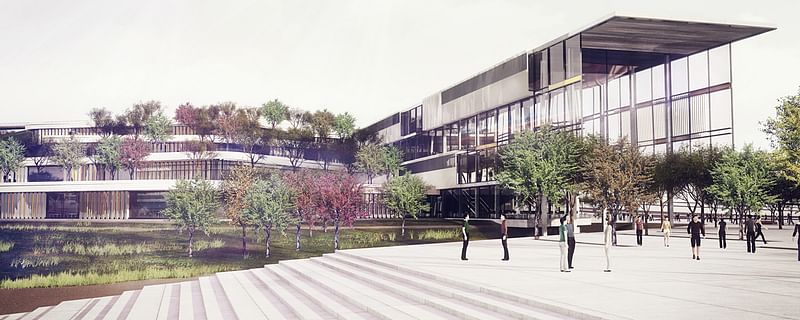
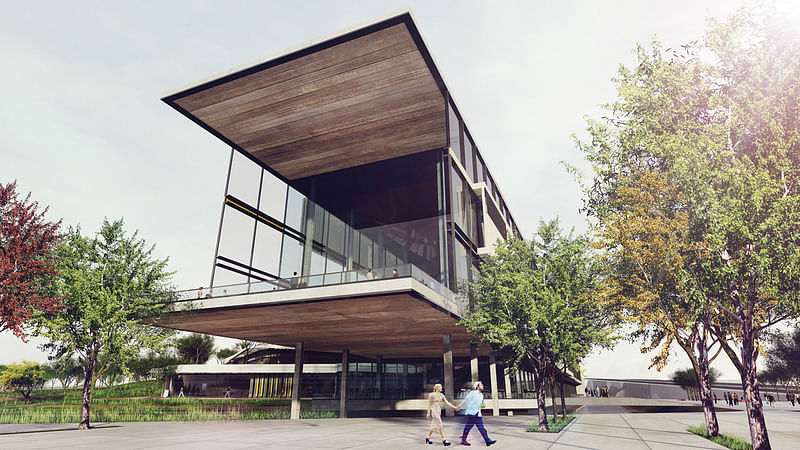
"Besides the conference and meeting halls in the terrace buildings, the red hall in the main building is probably the most prominent gathering space for collaborations and sharing new ideas. This venue will evolve into a landmark of Ostim Eco-Park where not only the Eco-Park employees but also everyone who is interested in sustainability and particularly Ostim personnel would benefit informal encounters, stimulating communication and exchange of ideas."
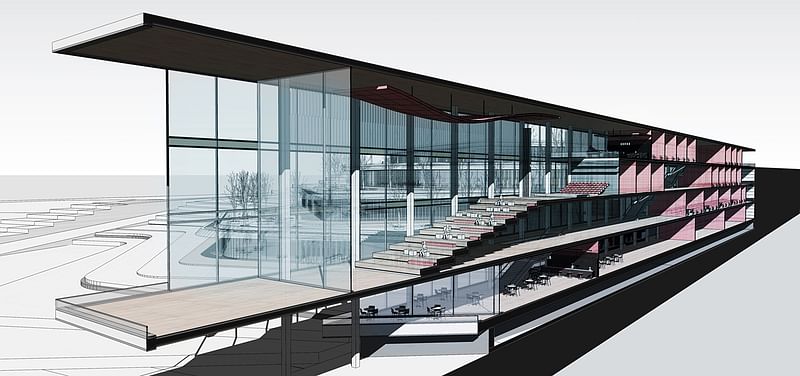
"The amphitheatre in the red hall is designed so that it can be used both for crowded events and smaller gatherings by dividing the space with partitions. With its sleek and spacious design the red hall is a part of everyday working life of the EcoPark with its open space design, location and function and its private cafeteria. This will serve to the gathering function of the space, furthermore provide a pleasant place for workers where they can just relax and enjoy a stimulating conversation."
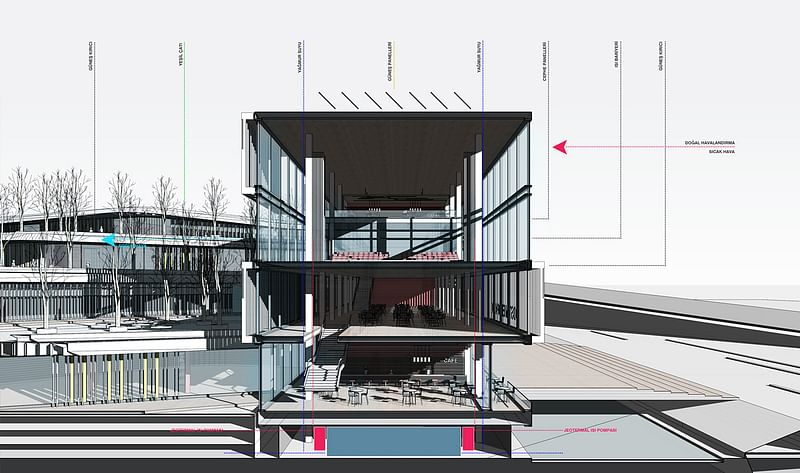
"The lighting and temperature control in the buildings are provided by sensors placed on the façade [...] A dynamic lighting system simulating natural light is considered for various activities in an office environment requiring different lighting qualities.
Placing the office space inbetween two corridors create a buffer zone for heating and cooling, and the glass façade of office space enable natural light to penetrate inside. Lighting and temperature control is also achieved through vegetation. Deciduous trees enable more light in winter and shade during summer."

"For the ventilation and heating of the building, the corridor system on both sides of the office block creates a greenhouse effect in winter thus contribute to heating of the environment. The warm air in the corridors is circulated in working spaces through air vents and provides passive heating. In summer, by opening the windows on the façade natural ventilation is attained.
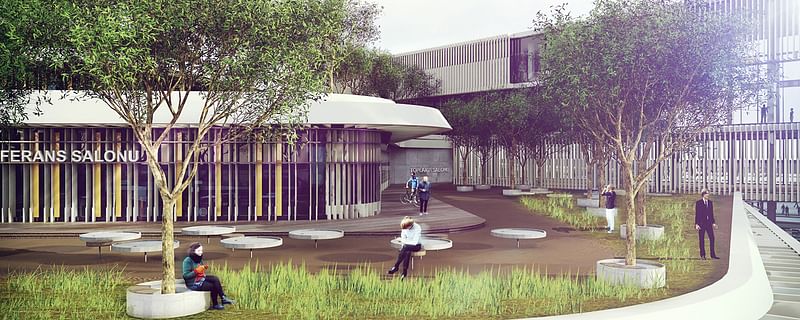
"Geothermal Heat Pumps are considered for the heating and cooling of the Eco-park. In this system, pipes buried underground containing liquids with approximately 10C temperature difference, transfer heat to or from the ground.
The green roofs of the terrace buildings contribute to the isolation of the building and to improved air quality, helping as well to lower air temperatures and combat the heat island effect."
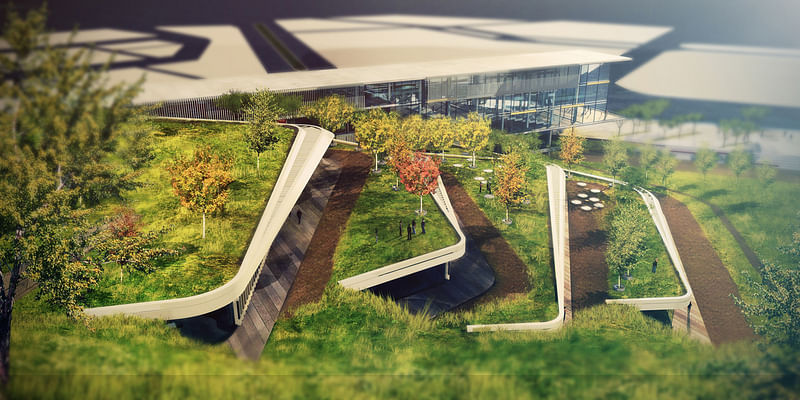
"The rain water and grey water collected on the site will be reused for the complex. This water will be purified by a simple mechanical filter and will be used for the irrigation of the landscape with a high efficiency drip irrigation system. Additionally low-flow toilets, waterless urinals, low-flow faucets and water-efficient plumbing fixtures all contribute to water savings.
The pool positioned on the southern side of the main building is designed for the collection of rain water. This pool can also be used for experimentations on hydro-culture or cultivating plants for biofuel."
All images courtesy of ONZ Architects.
You can also read about ONZ Architects' finalist entry for YAP Istanbul Modern here.
Click the thumbnails below for additional images.


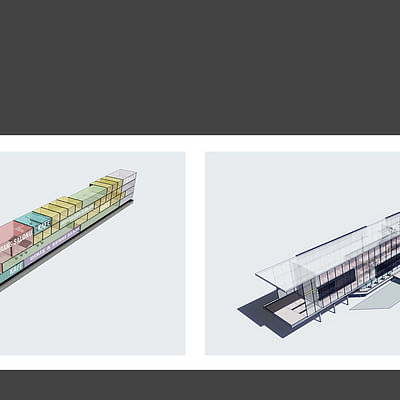

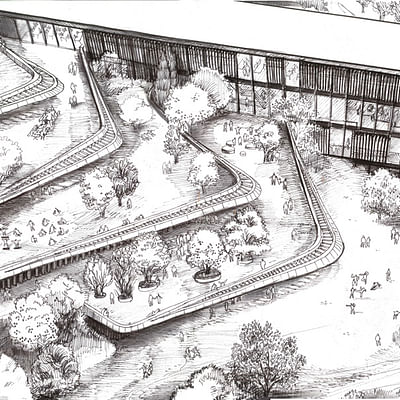

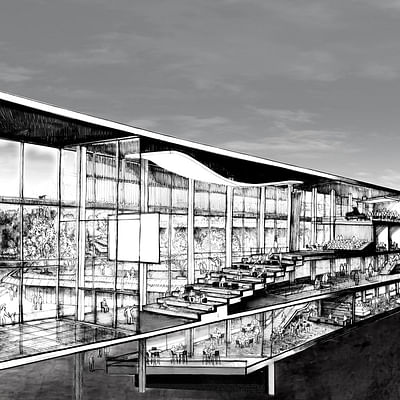

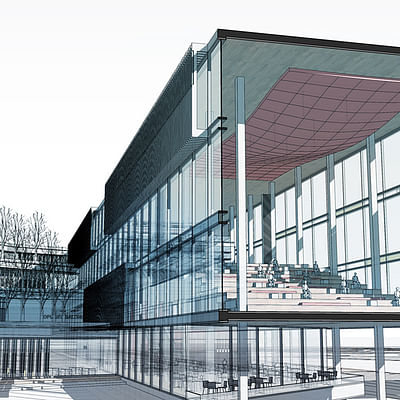

Share
0 Comments
Comment as :